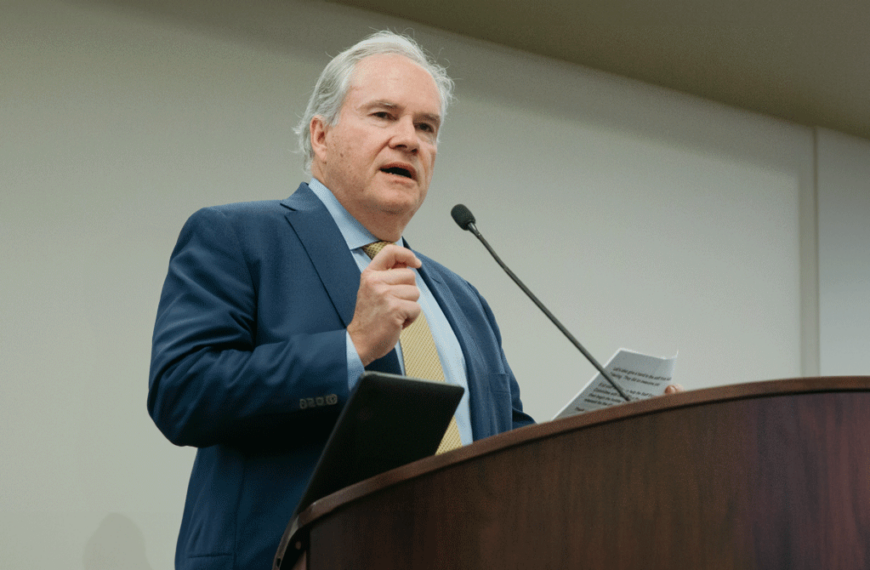It’s one thing to tell a lawmaker what your hospital – and others – need from policymakers in order to thrive. It’s another thing entirely to show them.
While getting in touch with legislators at their offices is a key part of being a hospital advocate, hosting lawmakers at your facility – offering them an up-close look at your day-to-day operations, and why you and other Texas Hospital Association members are asking for their help at the Capitol – is an invaluable chance to for them to absorb those lessons.
In turn, they may even use personal anecdotes from the visit as fodder for their reasoning and rhetoric, explaining in a legislative committee or on the House or Senate floor why they’re supporting or opposing a particular bill – and influencing other lawmakers to see it their way.

So showing a lawmaker around your hospital can be an extremely effective piece of advocacy. But these visits require extensive planning, an understanding of the needs of legislators and, most likely, a rehearsal to make sure you and your staff are prepared.
Here’s a guide from THA on how to plan for and carry out a tour of your hospital with a representative of your facility’s district.
When to Plan for a Visit
The best time to meet with legislators is when they are home in their districts between legislative sessions – making 2024, an even-numbered “interim” year where the Legislature isn’t in session, a good time to do it.
Anytime during the interim year can work, particularly if your representative is an entrenched incumbent who’s more than likely to win reelection. But next November and December – just after the election but before the Legislature convenes for 2025 – is a particularly ideal time. You can use the opportunity to establish a relationship with a new legislator or get reacquainted with an incumbent.
Getting Started
- First, appoint someone to take charge of the visit and be the primary point of contact with the legislator’s office. Since you likely will be visiting several areas of the hospital during the tour, it may be advisable to establish an ad-hoc planning committee. Members of the committee could include representatives from senior management, the board of trustees, nursing and medical staffs, the public relations/marketing department and managers from the key areas you plan to visit.
- Assign someone to coordinate logistics, such as reserving a meeting room, planning any meals or refreshments or making parking arrangements.
- Know the purpose of the visit. If your state senator or representative is new in office, you need to establish a relationship with him or her. For an incumbent, the visit can serve as a reminder of how important the hospital is to the community – both in terms of economic impact and health care delivery. In either case, the visit provides an opportunity to discuss issues of concern and to establish the hospital as a resource for information on health care topics.
- Do your homework. Does the legislator have any special interests or hobbies? Is he knowledgeable about health care issues? Does she personally know someone at the hospital – a board member, employee or member of the medical staff? Has the legislator or a family member ever been a patient at your hospital? If so, were there any issues associated with the stay?
Issuing the Invitation
- Contact your legislator as soon as possible. It probably will take a couple of weeks to work a hospital visit into the legislator’s schedule. If you’re scheduling between the end of the election and the beginning of the new legislative session, try for the earliest possible date.
- Send a formal letter of invitation from the CEO and/or board chairman (or a board member who has a personal relationship with the legislator). The invitation should be sent to the district office and also send a copy to the Capitol office.
- Be sure to extend your invitation to include the legislator’s key staff members. These are the people you will be dealing with once the session begins.
- Within a couple of days, the CEO or board member should follow up with a telephone call to the district office. At this time, potential dates for the visit can be discussed.
- Once the visit has been scheduled, send a letter of confirmation and note any special arrangements (e.g., where to park, which entrance to use, whether lunch will be served, etc.). It’s also a good idea to include an overview of the agenda and a list of who will be involved. Call the office again on the day prior to the visit to confirm that the legislator is still planning to come. Lawmakers’ plans can change at the last minute, so be flexible.
- Some legislators may want to receive more detailed information about the visit in advance. You may be asked to provide biographical information on key leaders of the hospital, a copy of your annual report, or other information. Be prompt in sending any requested information.
Planning the Visit
- Organize the visit so that it includes a brief tour of two or three important areas of the hospital, as well as a “sit-down” meeting. Use the tour as a backdrop for your discussion of key legislative issues. You can reiterate these points again during the meeting. Allot about 60 to 90 minutes for the tour. Depending on the time of day and who is involved, the meeting could be a lunch or small reception.
- Make sure elements of the visit don’t undercut the messages you want the lawmaker to take away from the visit. For example, if you are discussing Medicaid shortfalls and uncompensated care, serving a gourmet lunch on your best china conflicts with your message about budget shortfalls.
- Provide opportunities for the legislator to meet key hospital staff, such as a physician, a hospital trustee who knows the legislator or a hospital employee such as a nurse or social worker who works directly with patients. Inform participants in advance so they can be prepared.
- Walk the tour yourself in advance to make sure everything is in order and that you are prepared to deliver your intended message.
- Notify department managers of the visit, especially those in tour areas, and ask them to inform their staffs of the upcoming visit.
- Prepare for questions that the lawmaker may ask.
- Prepare a fact sheet on your hospital and other “take away” materials to give to the legislator. Don’t overwhelm your guest with marketing brochures; focus on information that supports your key messages.
- Notify the Texas Hospital Association about the planned visit. A member of THA’s advocacy staff can provide you with background information on the legislator and/or help you compile any statistics or information needed to illustrate your concerns.
- Make arrangements with your hospital’s public relations department to photograph the legislator’s visit and include a story on the visit in your hospital’s publications and social media channels
- On the day of the visit, send a reminder to the staff in the areas to be visited.
After the Visit
- Send a thank-you note, thanking the legislator for his time and briefly restating your willingness to serve as a resource on health care-related issues. The letter should be signed by the same person or people who issued the invitation.
- Be sure to include any follow-up information that was promised.
- Send the legislator copies of any photos and/or articles about the visit that appeared in your hospital’s publications and/or social channels.
- Evaluate the visit internally, noting both strengths and weaknesses for use in planning future visits.
- Send a report of the visit to THA’s advocacy staff.
- Maintain and build the relationship with the lawmaker. Keep legislators informed through regular updates about your hospital. Add them to the mailing list for an existing newsletter, or prepare a special mailing – perhaps quarterly – just for them. Offer to assist with background material on health issues, and always respond to information requests promptly.
Related articles from The Scope
Repeal of 2024 Cuts Are a Needed First Step to Protect Our Safety Net
Every piece of financial certainty our hospitals can get these days is appreciated – especially for the facilities that treat the most vulnerable Texans. For the rest of this year,…
Workplace Violence: Breaking a Cultural Norm
When the Texas Hospital Association pushed for key steps to protect health care workers from violence during last year’s state legislative session, it was trying to reverse a long-standing pattern…
How FQHCs Can Stay HRSA-Compliant
Health care compliance — adhering to rules, standards, policies, laws, and regulations related to medical practices — is about keeping operations running smoothly. It also promotes safe, high-quality care, and…
HOSPAC: Agents of Change
Out of all the ways the Texas Hospital Association pushes for better health care in Texas, HOSPAC – the only political action committee that represents all Texas hospitals – may…





